
Philatelic literature is written material relating to philately, primarily information about postage stamps and postal history.

Jean-Baptiste Philippe Constant Moens was a Belgian philatelist recognized as the first dealer in stamps for collectors. He was one of the original philatelic journalists.
Percy Gray Doane (1877–1945) was a philatelic dealer from New York City. He was born in Brooklyn on January 13, 1878 and died there on March 28, 1945.

Frederick Adolphus Philbrick, KC was an English barrister, judge, and an early philatelist.
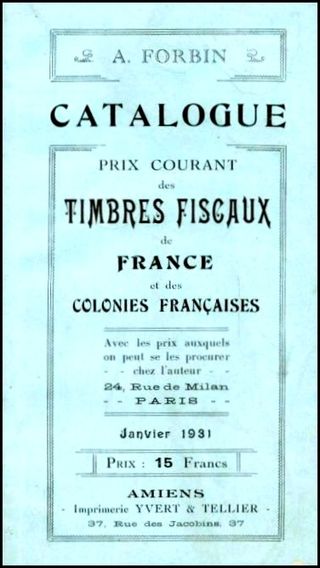
Alfred J. Forbin was a pioneering French stamp dealer who wrote an all-world catalogue of revenue stamps that has never been surpassed.

Alexander Berridge Kay was the founder, with E.J. Bridger, of the stamp dealers Bridger and Kay in 1897 or 1898 and a leading figure in the Fiscal Philatelic Society. In 1910, Kay identified used copies of the Italian forgery of the British grey-green Victorian 10 shilling stamp watermarked anchor and perforated 14. His letter to The London Philatelist, published in November 1910, warned the philatelic community of its existence.
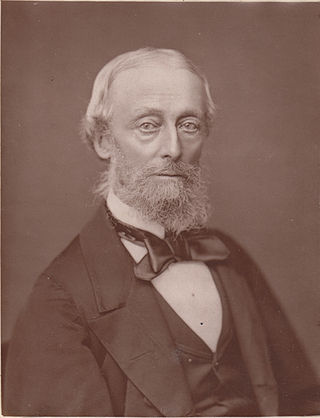
Charles William Viner A.M., Ph.D., was a British philatelist who was a founding member of the Philatelic Society, London, later to become the Royal Philatelic Society London, and who was present at the initial meeting of the society on 10 April 1869, and serving as its Secretary from 1871 to 1874. His obituary in The London Philatelist referred to him as the "Father of Philately" and elsewhere he was described as the vieille garde of philately having been actively collecting and writing about stamps since 1860. In 1921 he was entered on the Roll of Distinguished Philatelists as one of the founding Fathers of philately.

Maitland James Burnett was a British philatelist who was one of the "Founding fathers of Philately" entered on the Roll of Distinguished Philatelists in 1921. He was also editor of The Philatelic Record for the first seven years of its existence from 1879.
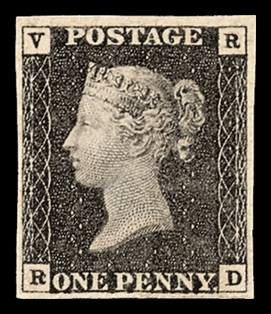
Morris Giwelb was a British stamp dealer, originally from the Province of Warsaw in Russian Poland, who, in his prime, became one of the most important dealers in the great rarities of philately.

Bernhardt Burghardt Assmus was a German stamp forger operating in London. He was originally from Hamburg.
Arnold Cartwright Waterfall was a philatelist who was a specialist in the stamps of Tibet. He wrote extensive on the subject and his articles appeared in Gibbons Stamp Monthly, the China Clipper, the Collectors' Club Philatelist, the China Philatelic Society Bulletin and The Philatelist. His The postal history of Tibet was written after thirty years of personal research and included the information that some Tibetan stamps were printed using house paint and that soot or boot polish were sometimes used to cancel stamps.
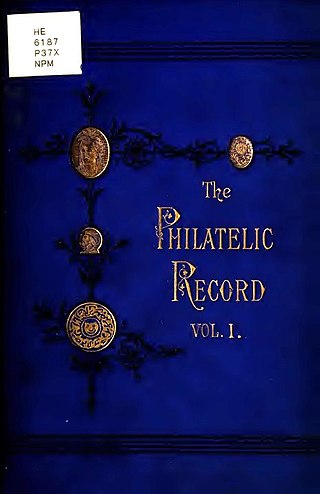
The Philatelic Record was an important early philatelic magazine published in 36 volumes between February 1879 and 1914. It was originally published by Pemberton, Wilson and Company of London and later by Buhl & Company when it was merged with The Stamp News to form The Philatelic Record and Stamp News, under the editorship of Edward J. Nankivell. It reverted to its original title when it was taken over by Sir Isaac Pitman and Sons.

The Stamp-Collector's Magazine was one of the earliest philatelic magazines. It was published in twelve volumes between February 1863 and 1874.
Louis Francois Hanciau, was a Belgian philatelist who signed the Roll of Distinguished Philatelists in 1921.

The Stamp-Collector's Review and Monthly Advertiser was one of the earliest philatelic magazines. It was published by Edward Moore & Co. of Liverpool from 15 December 1862 to 15 June 1864. Edward Loines Pemberton was the editor from January 1864.
Raymond James George Collins was a New Zealand philatelist who was added to the Roll of Distinguished Philatelists in 1936 and was the youngest man to receive that honour. Collins was unable to attend the signing ceremony in person.
The Stamp Collector's Record was the first magazine of stamp collecting published on the North American continent. The first edition was issued from Montreal, Canada, by Samuel Allan Taylor, in February 1864. A second edition was said to have been produced but only a few copies distributed. From December 1864 it was published from Albany, New York, until it ceased in October 1876 with volume 4, number 6.

Stamp Collecting was a weekly magazine of stamp collecting published in London from 1913 to 1984.
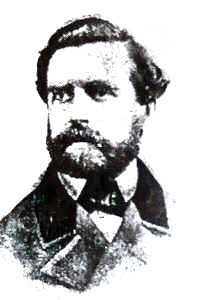
Georges Herpin was a 19th-century French stamp collector who in 1864 coined the French word philatélie, which in English became "philately".
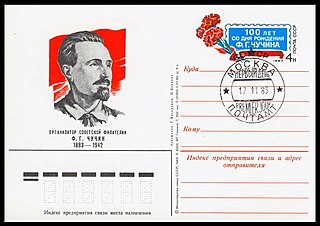
Feodor Grigorovich Chuchin was an official in the Soviet government who was chairman of the campaign to eliminate illiteracy. He also was an author on numismatic and philatelic topics.















